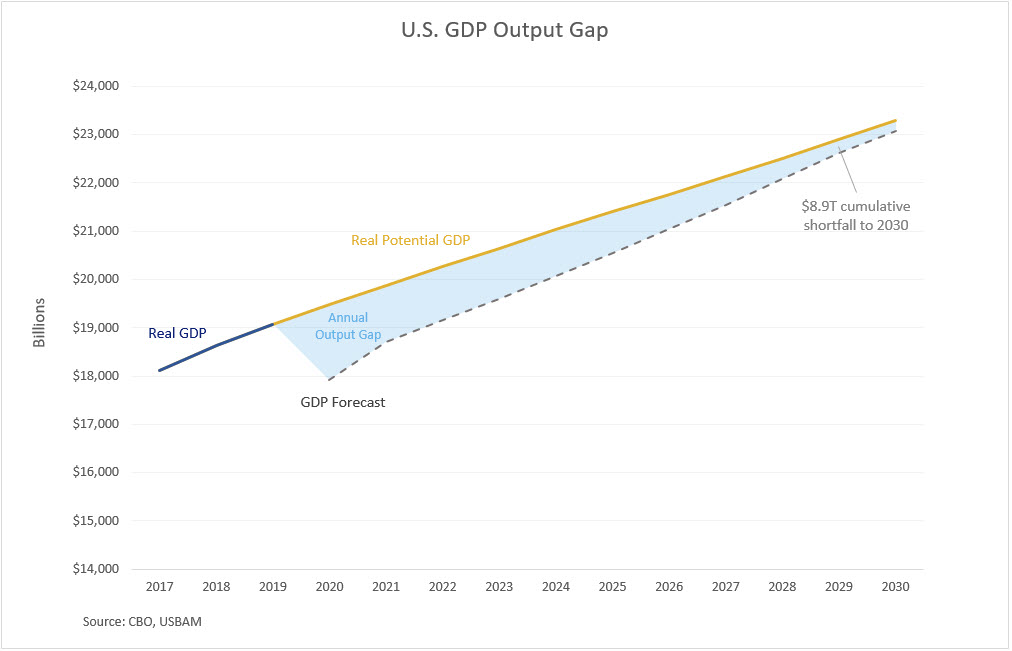USBAM Chart of the Month - U.S. GDP Output Gap
August 25, 2020

Introducing the "USBAM Chart of the Month" series, where USBAM shares a prepared chart and expands on its significance in today's market. This month, Chief Investment Officer Jim Palmer takes a closer look at the U.S. Gross Domestic Product (GDP) Output Gap.
Jim Palmer, Chief Investment Officer
The IMF defines the output gap as an economic measure of the difference between the actual output (GDP) of an economy and its potential output. Potential output can be described as the maximum amount of goods and services an economy can efficiently produce at full capacity. Policymakers use the output gap to help gauge potential inflation pressures in the economy. In its simplest terms, a negative output gap signals there is spare capacity in the economy, implying policymakers can implement fiscal and monetary policies without fear of sparking inflation.
Current forecasts suggest the U.S. output gap will persist for the next decade, which is one of the reasons we believe the Federal Reserve (Fed) will keep current policy rates near the zero-bound for several years. The projected slack in the U.S. economy should act as a governor to keep inflation pressures down at a time when the Fed is fighting to increase inflation expectations.

Can the output gap close earlier than current expectations? Perhaps. Fiscal and monetary stimulus has been provided in an unprecedented scale and the development of effective COVID-19 vaccines and treatments could be game changers for reopening the economy and bending the growth trajectory upward. A less happy possibility is the potential economic growth is below current estimates. The Congressional Budget Office uses labor growth (hours worked), capital (stock of productive assets), technological progress (productivity) and trend analysis to model potential output. It seems doubtful the extraordinary COVID-19 inspired changes to the work force, physical assets and productivity are fully accounted for in current calculations. It's early, but the changes skew negative in my mind. Worker skills erode over time with high and persistent unemployment and it is difficult to assume hybrid education will equal in-person studies. Plant, equipment and office space tend to decay if not used and continually maintained. There may be gains in productivity as technology and work-from-home replace travel and commuting in the new paradigm. We'll see.
Lower potential GDP is far from ideal and can lead to substandard economic growth and higher inflation (aka: stagflation). But that's tomorrow's problem. Today, policymaker efforts are rightfully focused on digging the economy out of a deep hole and the projected output gap should give the Fed plenty of room to maneuver.
Sources
Congressional Budget Office, A Summary of Alternative Methods for Estimating Potential GDP, March 2004
Finance & Development, What Is the Output Gap?, September 2013